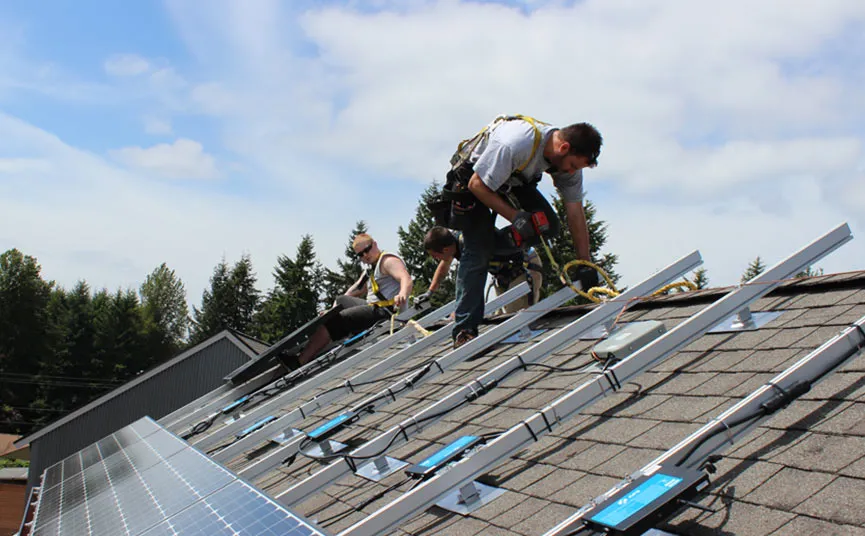What Should You Do When An Accident Happens On The Micro Solar Inverter?
Micro solar inverters, also known as microinverters, are essential components of solar power systems that convert direct current (DC) generated by individual solar panels into alternating current (AC) for use in your home or business. These inverters are popular for their ability to optimize the performance of each panel, especially in systems with shading or orientation challenges. However, accidents or malfunctions can occur with any electrical device, including microinverters. Knowing how to respond quickly and effectively can prevent further damage and ensure safety.
Common Accidents and Issues with Microinverters
While microinverters are generally reliable and safe, accidents or malfunctions can happen due to various reasons. Here are some common issues:
Overheating: Microinverters can overheat if they are exposed to extreme temperatures or if there is inadequate ventilation. Overheating may lead to reduced efficiency or, in extreme cases, complete shutdown.
Electrical Faults: Electrical faults such as short circuits, power surges, or ground faults can occur due to faulty wiring, improper installation, or external electrical disturbances. These faults can cause the inverter to malfunction or fail.
Physical Damage: Physical damage to the inverter or solar panels, caused by storms, falling debris, or accidental impacts, can affect the performance of the microinverter.
Software Malfunctions: Some modern smart micro inverters are equipped with advanced software for monitoring and optimization. Software glitches or bugs can disrupt normal operation.
Immediate Actions to Take When an Accident Occurs
When an accident occurs involving your micro solar inverter, it is important to take immediate action to minimize risk and damage:
Disconnect Power: The first and most important step is to disconnect the power supply. If safe to do so, turn off the main solar system breaker and isolate the affected inverter. This step prevents electrical shock and reduces the risk of fire.
Evacuate and Assess: If the accident involves smoke, fire, or a potential electrical hazard, evacuate the area immediately and call emergency services. Do not attempt to handle the situation alone if it poses a significant risk.
Visual Inspection: Once it is safe, conduct a visual inspection of the inverter and surrounding area. Look for signs of overheating, burn marks, or physical damage. Do not touch the inverter or any exposed wiring until you are sure the power is off and there is no immediate danger.
Check System Monitoring: If you have a smart micro inverter with remote monitoring capabilities, check the system monitoring platform for any alerts or error messages. These messages can provide valuable information on the nature of the fault and help diagnose the issue.
Contact a Professional: For any significant accident or malfunction, contact a qualified solar technician or electrician to inspect the system. They will have the expertise to safely handle and repair the inverter or any associated equipment.
Preventive Measures to Avoid Inverter Accidents
Preventing accidents with your microinverter is just as important as knowing how to respond to them. Here are some preventive measures you can take:
Regular Maintenance: Schedule regular maintenance checks with a qualified professional to inspect and service your solar power system. Routine checks can identify potential issues before they escalate into accidents.
Proper Installation: Ensure that your microinverter and solar panels are installed by a certified professional. Improper installation is one of the leading causes of electrical faults and malfunctions in solar power systems.
Adequate Ventilation: Make sure that your microinverters are installed in a well-ventilated area to prevent overheating. Avoid placing them in direct sunlight or enclosed spaces where heat can build up.
Surge Protection: Install surge protectors to safeguard your system against power surges, which can damage the inverters and other electrical components.
Software Updates: If your microinverter is a smart model with software-based monitoring, ensure that it is regularly updated to the latest version. Software updates can fix bugs and improve the system's overall performance.
When to Replace Your Microinverter
In some cases, an accident or malfunction may damage the microinverter beyond repair. Knowing when to replace your microinverter is crucial for the safety and efficiency of your solar power system:
Frequent Faults: If your microinverter frequently trips, overheats, or shows signs of malfunction despite repairs, it may be time to consider a replacement.
Aging Equipment: Microinverters have a typical lifespan of 15-25 years. If your system is approaching or has exceeded this age, a replacement may be necessary to maintain optimal performance and safety.
Physical Damage: Significant physical damage to the inverter, such as cracks, burn marks, or melted components, is a clear indicator that a replacement is needed.
Obsolete Technology: If your microinverter is an older model and is no longer compatible with modern solar panels or monitoring systems, upgrading to a new model can improve efficiency and provide better safety features.
Accidents involving micro solar inverters can be concerning, but knowing how to respond effectively and implement preventive measures can help mitigate risks and maintain the safety and performance of your solar power system. Whether it involves immediate action in the event of an accident, regular maintenance, or replacing aging equipment, taking proactive steps will ensure that your investment in solar energy remains safe, reliable, and efficient for years to come.

-
String Solar Inverter: The High-Efficiency Solution for Smart Solar EnergyNuusJul.14,2025
-
Revolutionizing Rooftop Energy with the Power of the Micro Solar InverterNuusJul.14,2025
-
Power Independence with Smart Off Grid Solar Inverter SolutionsNuusJul.14,2025
-
On Grid Solar Inverter: Powering the Future with Smart Grid IntegrationNuusJul.14,2025
-
Monocrystalline Solar Panels: High-Efficiency Power for the Future of Clean EnergyNuusJul.14,2025
-
Bifacial Solar Panel: A Smarter Investment for Next-Generation Energy SystemsNuusJul.14,2025







